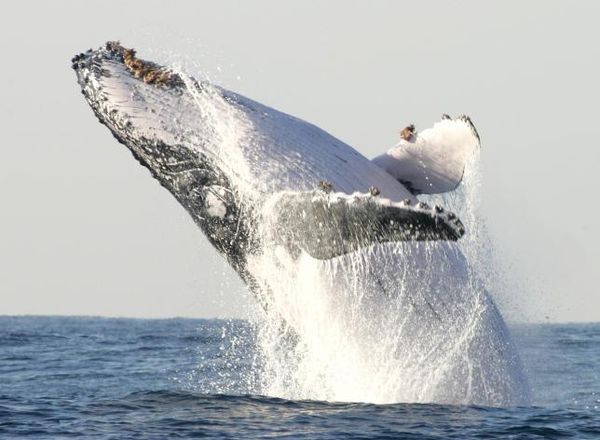Pooped out: absence of big mammals foils ecosystem fertilization
Date: 27-Oct-15
Country: USA
Author: Will Dunham

A humpback whale
breaches off South Africa's Kwa-Zulu Natal South Coast, in this file
photo taken July 9, 2004.
Photo: Mike Hutchings/Files
You can call it the fertilization cessation, and scientists say it has had a disruptive effect on ecosystems around the world.
A study unveiled on Monday showed that the extinction or precipitous population declines of large land and sea mammals starting at the end of the last Ice Age and continuing through today has deprived ecosystems of a vital source of fertilization in their dung, urine and, after death, decomposing bodies.
The scientists said these large mammals including whales, mammoths, mastodons, ground sloths, rhinos, huge armadillos as well as seabirds and migrating fish like salmon played a key role in making Earth fertile by spreading nutrients across oceans, up rivers and deep inland.
"In the past, abundant large free-ranging animals made nutrients more evenly distributed, thus increasing global fertility," University of Oxford ecologist Christopher Doughty said.
By traveling long distances, these large mammals transported and recycled nutrients like phosphorous and nitrogen to far-flung ecosystems, boosting their productivity. This capacity to spread nutrients away from concentrated sources on both land and sea to other ecosystems has plummeted to 6 percent of its former level, the study found.
"In a sense, Earth was a land of giants before humans colonized the planet," University of Vermont conservation biologist Joe Roman said.
About 150 species of large mammals went extinct around 10,000 years ago, many due to a combination of human hunting and climate change, Roman said.
Of 48 species of the very largest plant-eating land mammals alive during the Ice Age, including 16 species of elephants and their relatives, nine rhinoceros species and eight giant sloth species, only nine remain, none in the Americas, Doughty said.
Before commercial whaling cut global whale populations by up to 90 percent in recent centuries, whales and other marine mammals transported around 750 million pounds (340,000 tonnes) of phosphorus from depths of around 100 yards (meters) where they feed to the sun-lit ocean surface annually, the researchers estimated. This has declined to 23 percent of its former level.
"Great whales such as humpbacks, blue whales and sperm whales often dive deep to feed, coming to the surface to breathe and digest. They also defecate, or poop, at this time, releasing important nutrients such as nitrogen and phosphorous. These nutrients can enhance the growth of algae, invertebrates even fish," Roman said.
The research was published in the Proceedings of the National Academy of Sciences.
(Editing by Sandra Maler)
![]()
© Thomson Reuters 2015 All rights reserved